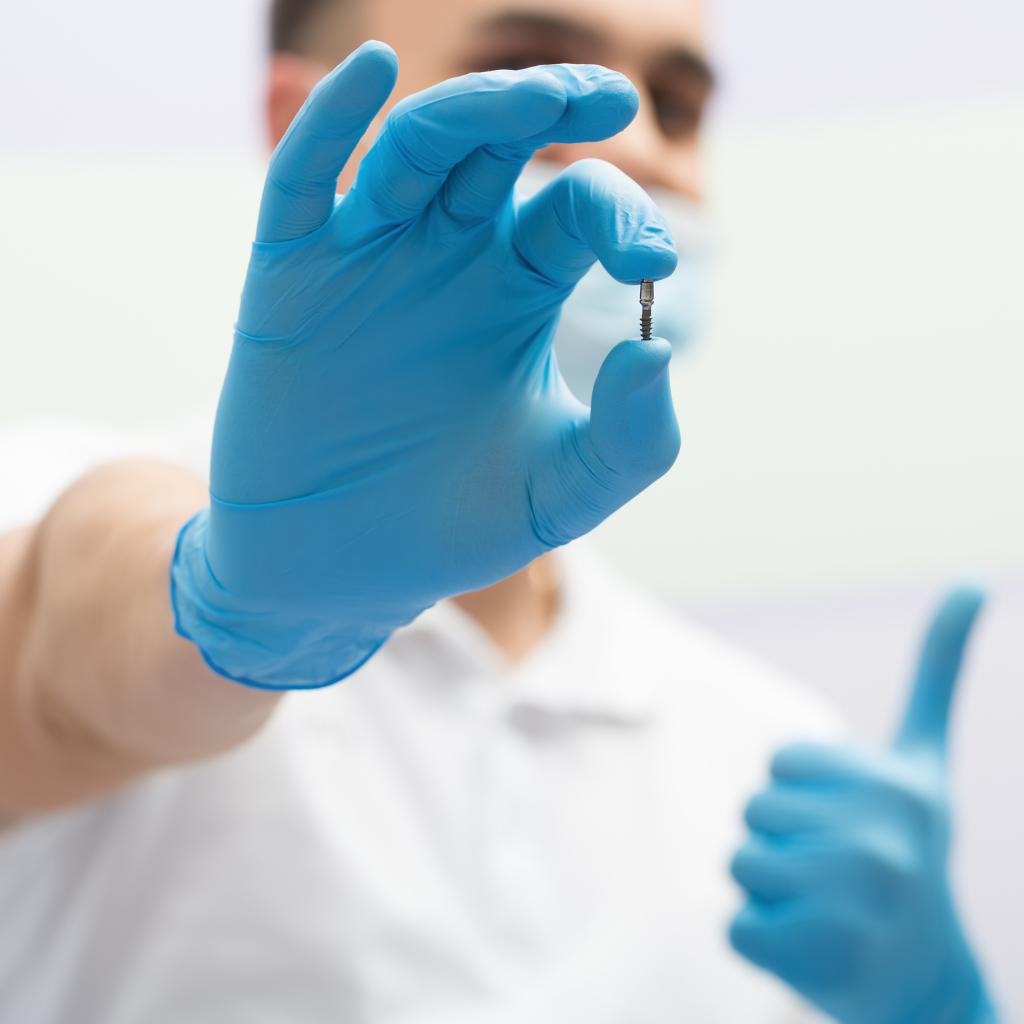عيادات التوب لطب وزراعــة الأسنــان

A dental implant (also known as a dental implant) is a surgical component that interacts with the jawbone to support dental prosthetics such as a crown, bridge, denture, or facial prosthesis, or to act as a fulcrum for orthodontics.
Dental implants are currently the greatest development in dentistry, as they treat tooth loss without the need to involve any of the missing teeth.
It is a biological process that depends on the fusion of bone, which is done by bonding titanium to bone.
The implant is placed to fuse with the bone first, then a dental prosthesis is added.
A certain amount of time is required to allow for the bonding and stability of the implant before attaching the dental prosthesis (whether a crown, bridge or denture) or placing the abutment that holds the dental prosthesis/crown
The success or failure of implants depends on the health of the person receiving the implants, medications taken that can affect the chances of bone healing, and the health of the tissues in the mouth.
The amount of stress that will be placed on the implant and fixation during normal function is also evaluated. Planning the placement and number of implants is fundamental to the long-term health of the prosthesis because the biomechanical forces created during mastication are influential.
The position of the implants is determined by the position and angle of the adjacent teeth, or by dental molds cast in the laboratory, or by using computed tomography with CAD-CAM technology to make the abutments so that the implant is directed in the appropriate direction. Prerequisites for successful long-term bonding of dental implants are the health of the jawbone and gums.
Because both can atrophy after tooth extraction, procedures such as sinus lifts or gum grafts are sometimes required to restore optimal bone and gum thickness before crowns, bridges, or dentures can be placed.
The final prosthesis can be fixed, where the person cannot remove the denture or teeth from their mouth, or it can be removed. In each case, an abutment is attached to the implant.
When the prosthesis is installed, the crown, bridge, or denture is secured to the abutment with either screws or dental adhesive glue. When the prosthesis is removable, a matching adapter is placed in the prosthesis so that the two pieces can be fixed together
WhatsApp us